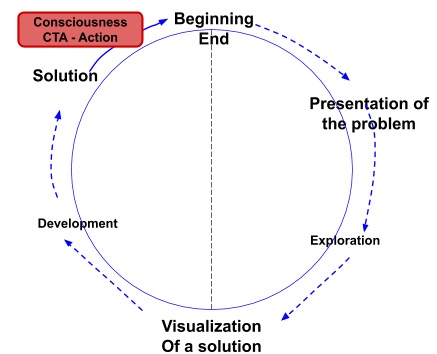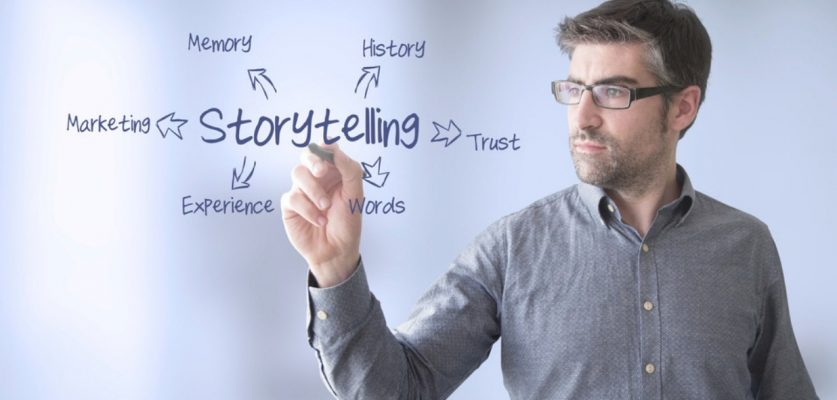Every day, more and more companies, institutions and individuals use Storytelling to communicate messages. Why do they do it? Because the art of telling stories, rooted in all cultures and latitudes, creates the context for conveying those values that we desire to link to some brand or product. Through Storytelling, this communication occurs in a much more effective way than with the mere listing of attributes. .
Storytelling uses three functions to reach an audience:
- Identification: the story makes our audience identify with the characters and the events they go through.
- Emotionality: the story awakens particular emotions – joy, sadness, compassion, anger – which become channels of connection.
- Bonding: the brand, institution or person becomes the repository of these values and emotions, and it creates a special bond with the audience.
To understand a little bit about what Storytelling is about, let’s see how some companies use it.
A Christmas with #ZeroPyrotechnics
Perhaps many of us have been struck by how the noise level has dropped over the past Christmas. Usually, at the stroke of midnight there is a roar of rockets and firecrackers that lasts for hours.
When I commented on the “almost firecracker-free Christmas” with colleagues and friends, to my surprise, I got a unanimous response. “Have you seen how pets and autistic persons suffer from such a noise?
To check this further, I did my survey: I asked the florist, the policeman on the corner, the supermarket cashier, and the babysitter. They all gave me the same answer, ending with a: But, haven’t you seen the #ZeroPyrotechnics campaign?
Is there a sound bothering you? Now imagine having to listen to it three times louder.
Pyrotechnics in Jimmy’s ears – Rimac Insurance Co.
#Zerofirecrackers ! #PreventionIsSimple
Rimac, an insurance company in Peru, uploaded the above video some ten days before Christmas. With different hashtags, it went viral throughout Latin America, with hundreds of thousands of views – and millions of tears – in just six days. It was the trigger for a debate on social networks, news, health and pet programs across the continent.
The number of visits to Rimac’s site grew by 4000%, accumulating 25,000 backlinks. But above all, the brand has demonstrated that it not only promises wellbeing but that it achieves it. Many people, moved by the stories in the videos, have changed their habits.
Why does Storytelling captivate us so much?
The above example shows us that Storytelling appeals to universal values. And among them, empathy stands out, leading us to identify ourselves with the characters of a story, to feel what they feel and to dive into their minds. This eminently human capacity is the base on which this marketing strategy relies, making it effective, while subtle.
“Marketing is no longer about the things you do, but the stories you tell”
Seth Godin

Storytelling challenges and progressively leads the audience, throughout an account, to communicate:
- Information, under the guise of a story
- Values that a brand or product stands for
- Emotions and commitments concerning the values conveyed
- A scene which serves for solving a problem: a beginning, a conflict and a solution
- A call to action
It is important to note that the best stories are those in which the audience receives the message as a kind of revelation: suddenly, something previously overlooked, becomes a discovery that ends in learning..
Some infallible Storytelling tactics to inspire your audience
In the following TED Talk, “Why Stories Captivate“, Tomás Pueyo describes what Storytelling is and delves into some issues that we should take into account when building a story.
Be authentic
Every brand with a compelling history has some reason which led to its creation. Therefore, the first step to start building stories is to be authentic and go to the root of our brand, product or venture.
- what were our intentions, convictions and reasons to launch it?
- What life experiences, emotions and values do they awaken in us?
- How do they translate to the lives of our consumers or customers?
Say “I”
To summon your audience’s “you”, there is nothing better than speaking in the first person. Nowadays, we live overwhelmed by an immense amount of data and messages that we must process. Therefore, more than ever, the most effective way to address someone is to relate to the entire spectrum of emotions and experiences that we human beings share.

Structure
There are countless recipes for displaying stories. Usually, every story begins with some conflict. Through the unfolding of a series of acts, after a climax, the battle is resolved in the end.

In the case of Storytelling, the circular structure can be much more effective: the characters close the story becoming aware of an issue that changes their view of the initial problem. By using this scheme, which represents the human learning process, our audience is moved to take action spontaneously, by the discovery of something meaningful.

Three original ways to tell a story
How can we cover these steps to connect with our audience? Below are three compelling stories of established brands, masterfully displaying the tactics listed above..
Lego: building as a family
Undoubtedly our childhood has been populated with games using these famous little bricks. But what is perhaps not so well known is the story behind this brand, whose name came about by chance thanks to the genius of a man who sought to overcome many misfortunes.
Lego was a brilliant idea and the rescue raft of the Danish carpenter Ole Kirk Christiansen (1891-1958). In the Great Depression of the 1930s, he went bankrupt and soon after lost his wife. To support his four children, even while grieving, he was able to carve out a story of growth and improvement.
This fantastic film invites us to enter into the exciting adventure of this carpenter who rebuilds his life by dint of creativity and persistence, to bring his family out into the open. The same creativity and perseverance that we can develop as adults and children when we play at building castles, ships, boats, cities and even robots with Lego kits..
Airbnb enables the trust of staying with friends to be discovered
Joe Gebbia founded Airbnb after welcoming into his own home a man he had met on the street, a complete “stranger” who had bought him a work of art. On a TEDTalk in Vancouver, he says that this experience made him turn around and begin to realize that far from “Stranger equals Danger”, strangers are friends to be discovered.
Two years after that encounter, a Design Conference in San Francisco was the occasion for the unscripted launch of Airbnb. Gebbia was broke and unemployed. He and his best friend, Brian Chesky, turned his apartment into the first accommodation for designers who were going to participate in those four days of the conference.

Soon the first Airbnb bed and breakfast was born: for a few dollars, they provided a mattress to sleep on, a work table with a good wi-fi connection and breakfast every morning. The two friends sought funding to scale up the project, but in the eyes of the investors, it all seemed a bit crazy. Opening the intimacy of one’s home to strangers and staying with strangers were both too risky challenges.
Gebbia and Chesky focused on their design skills to overcome the crucial issue for Airbnb. They devoted to creating a website to break down the prejudice that a stranger is synonymous with danger. They found that user reviews were the heart of the matter: with excellent reviews, they could build a reputation. And with it, gain the confidence necessary to overcome the human tendency to flee from the different, from the unknown.
Airbnb introduced a new social trend: travelling can be much more than just visiting tourist sites. The brand offers a different, more vibrant experience: the knowledge of different cultures through human encounter, sharing the intimacy of home. And the beginning of absolutely magical stories, such as that of Hernán Casciari:
Dove: the unique beauty in every woman
Over time, Dove has positioned itself as a cosmetic brand that affirms the unique charm of each woman. The following Dove video is an excellent example of Storytelling. It relates a kind of experiment in three moments:
- Gil Zamora, a portrait artist from the FBI, draws several women, blindly following the description they give for their most prominent facial features.
- Then, based on other people’s testimonies, the artist makes a second portrait.
- Finally, each woman confronts the two portraits: the first one, based on the look on herself; the second one, drawn from the impressions of fleeting witnesses, shows that they are much more beautiful than they think..
This double portrait leads them to become aware of the attributes they do possess but had not previously perceived. The story has served Dove to reveal the beauty of their own to these women, remained unknown until that moment.
Conclusion
Brand success lies in the ability to build a presence within people’s minds and in their lives. In this sense, Storytelling is an excellent ally: it can help establish the first connection to forge a bond with our consumers and potential customers.
A well-told story allows us to lay the foundations for a relationship that will last into the future. It will make our brand grow, based on those very values that we stand for and that our audience shares or longs to live.
May this be the beginning of many success stories for your brand!
—
You might also be interested in:





